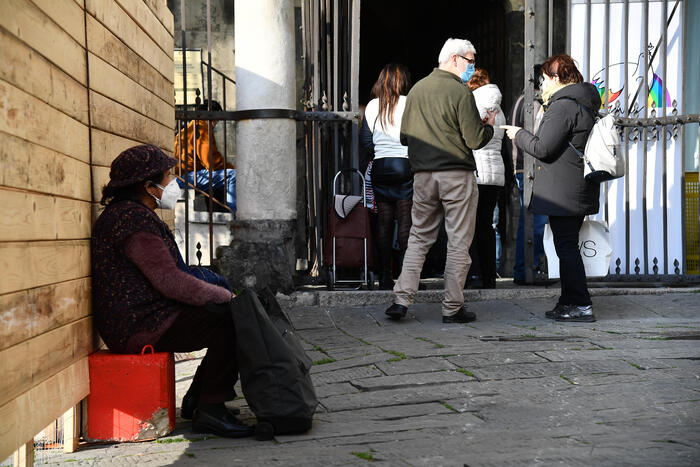In 2021, just over 1.9 million families (7.5% of the total, from 7.7% in 2020) and about 5.6 million individuals (9.4% as l 'last year).
Istat indicates this, underlining that therefore, absolute poverty "substantially confirms the historical highs reached in 2020, the year of the beginning of the pandemic due to Covid-19".
There are just under 1.4 million minors in absolute poverty.
The cause of this substantial stability, explains Istat, is attributable to various factors, in particular, to a more contained increase in the consumption expenditure of less well-off families (+ 1.7% for 20% of families with the lower expenditure, i.e. almost all households in absolute poverty) which was not sufficient to compensate for the recovery in inflation (+1,
9% in 2021), without which the share of families in absolute poverty would have fallen to 7.0% and that of individuals to 8.8%.
Higher consumption, therefore, does not compensate for inflation.
As regards childhood, in 2021, absolute poverty in Italy affects 1 million 382 thousand children (14.2%, compared to 9.4% of individuals nationwide).
The incidence varies from 11.4% in the Center to 16.1% in the South.
There are almost 762 thousand families in absolute poverty in which there are minors, with an incidence of 12.1% (stable compared to 2020), the Istat report also indicates.
In 2021, absolute poverty is even higher in the South, while it improves in the North for families and individuals.
Last year, in fact, Istat indicated, the
incidence of households in absolute poverty is confirmed as higher in the South (10.0%, from 9.4% in 2020) while it drops significantly in the North (6.7% from 7.6%), particularly in the North- west (6.7% from 7.9%).
Among poor families, 42.2% reside in the South (38.6% in 2020) and 42.6% in the North (47.0% in 2020).
Therefore, the Institute underlines, the proportion recorded in 2019 is restored, when poor families in our country were distributed almost equally between the North and the South.
Also in terms of individuals, the North recorded a marked improvement in the incidence of absolute poverty which went from 9.3% to 8.2% (result of the decrease in the North-West from 10.1% to 8.0% and substantial stability in the Northeast from 8.2% to 8.6%) with values still distant, however,
from those hired in 2019. Thus, there are over 2 million 200 thousand absolute poor residing in the Northern regions against 2 million 455 thousand in the South.
In the latter division, the incidence of individual poverty increases from 11.1% to 12.1% (13.2% in the South, 9.9% in the Islands);
in the Center it rises to 7.3% from 6.6% in 2020. The condition of families with the highest number of members worsens.
In 2021, the incidence of absolute poverty is in fact higher among the most numerous households: it reaches 22.6% among those with five or more members and 11.6% among those with four;
signs of improvement come from the families of three (from 8.5% to 7.1%) and of two members (from 5.7% to 5.0%).
This is indicated by the Istat report on absolute poverty.
The hardship is more pronounced for families with minor children, for whom the
incidence passes from 8.1% of families with only one minor child to 22.8% of those with three or more.
On the other hand, the incidence of poverty is lower, at 5.5%, in families with at least one elderly person and is confirmed at 3.6% among couples where the age of the family reference person is over 64 years. .
In general, Istat points out, family poverty shows a decreasing trend as the age of the reference person increases;
generally, in fact, the families of young people have lower spending capacity because they have lower average incomes and have fewer savings accumulated over the course of their lives or inherited assets.
Absolute poverty concerns 9.4% of families with a reference person between 18 and 34 years of age and 5.2% of those with a reference person over 64 years of age.








